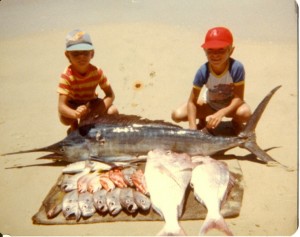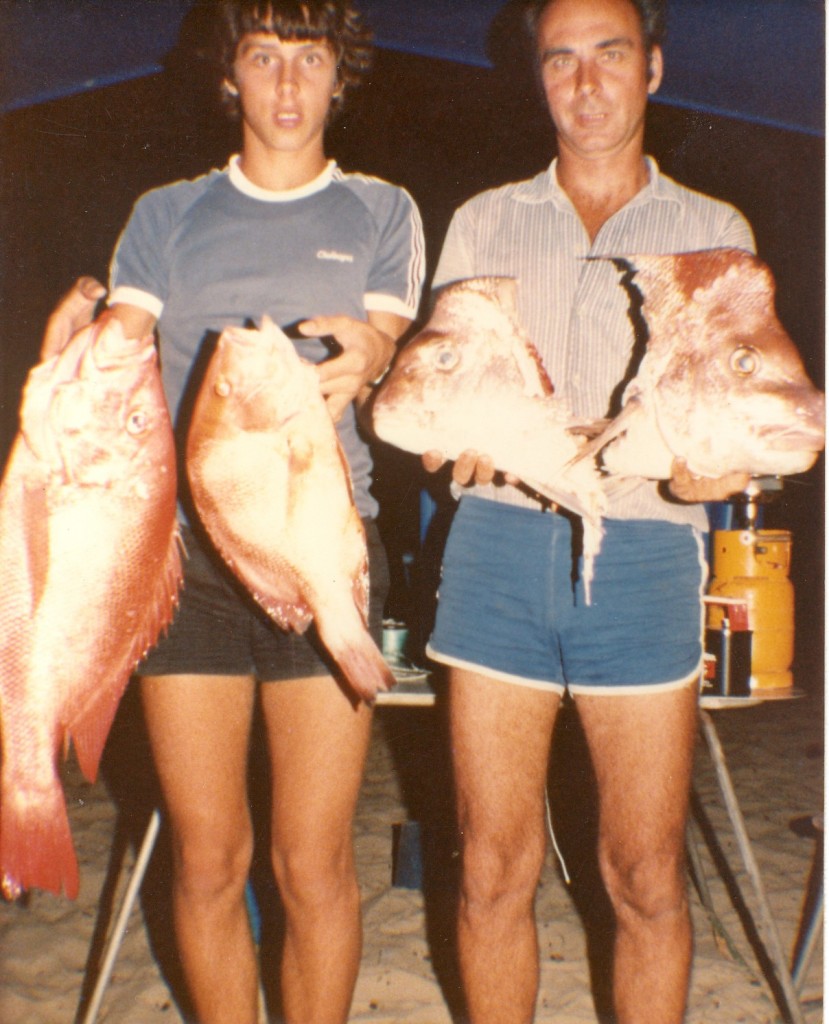
Camping/fishing Double Island Point in the 1980’s
In this article I thought I would share my experiences of Double Island Point and how I began fishing this fantastic area. It all began when Dad and his mates started fishing from the rocks at DI Point 1974 where they would catch Jewfish, Bream, Trevally, Tailor and the odd Snapper. Back then there were a limited number of people visiting DI and most were fishermen camping on the bayside in tents or in the fishing huts which were later bulldozed down.
Dad recalls most fishermen there as mad Mackerel fisho’s with some making a living from it and never recalled too many large Reef fish being caught. He soon made the decision to buy a 16 foot Clark Abalone boat and this started a mad keen DI fishing obsession that I’m sure will continue for many generations to come. Like others they targeted Spanish Mackerel around the Pinnacles, Wolf Rock and the Headland area which produced good catches and when that was slow proceeded to bottom fish for reefies in the same areas which produced some nice fish but nothing outstanding like you would think back then. 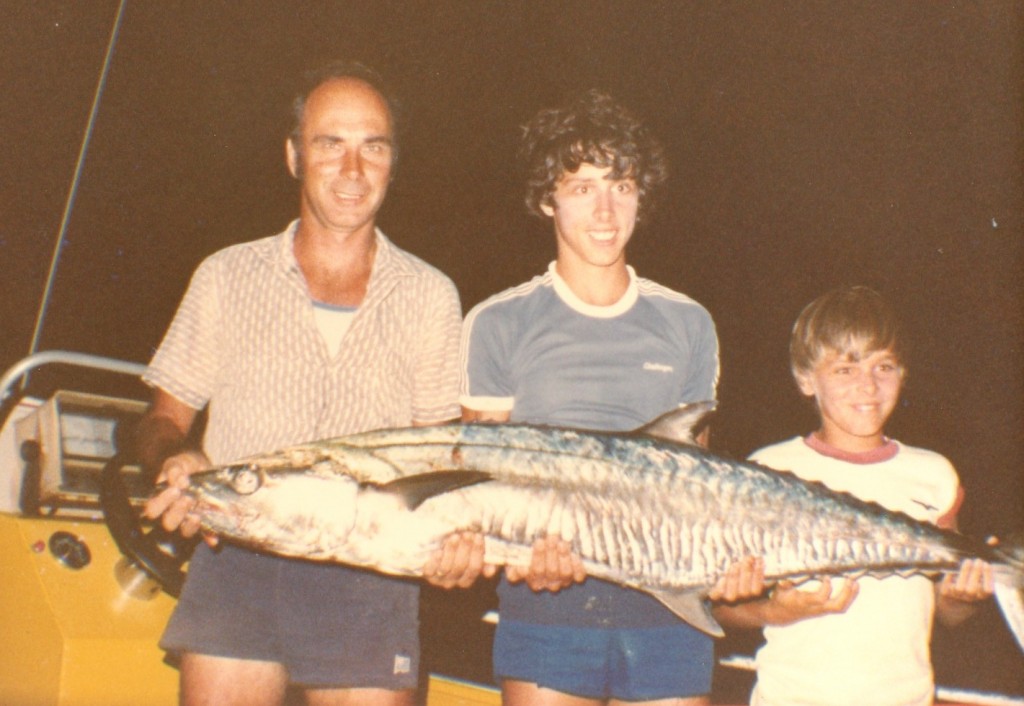
The fishing at DI carried on for years with lots of weekend trips and all school holidays being spent at DI as a family. Me being the youngest of 3 boys meant from when I was born it was basically a second home. By the 80’s the bayside camping grounds were a great place to be with plenty making the trip from all over SE Queensland but it wasn’t over crowded and most were regulars who returned every year. As kids we would do all the things kids do at the beach including lots of fishing and also swimming in the freshwater lagoon that used to be located on the bayside in front of the campsites similar to what Waddy Point Fraser Island is now. Just to clarify this for readers this wasn’t the massive saltwater lagoon which formed between the large sand dune and the DI headland but further around the bayside and It’s a fact most find hard to believe but I have included a picture to show this freshwater lagoon that we used to all enjoy until about the mid 80’s when the beach started to really erode badly taking not only hundreds of metres of sand away from the camping area but also taking the freshwater lagoon away as well.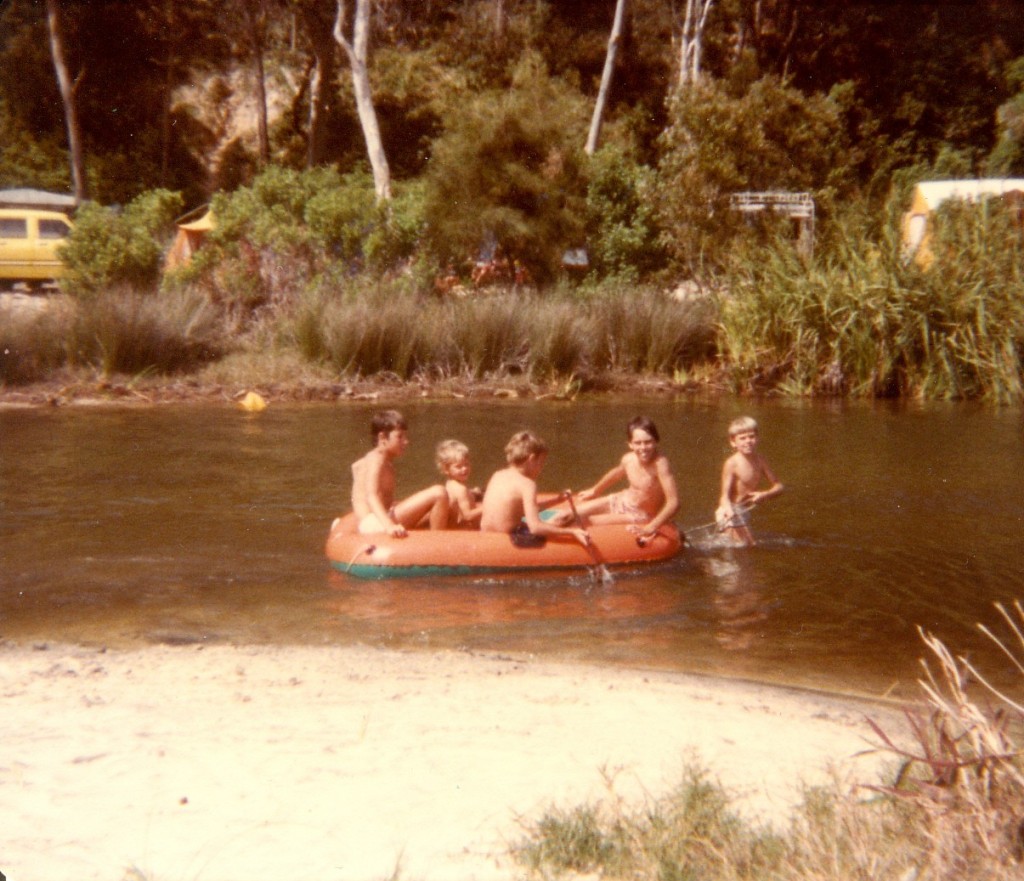
By the 90’s the beach erosion was so bad it had just about taken the whole camping area away including a new toilet block. The Rangers soon closed down any camping in the Bayside, which I’m sure devastated so many people who were regulars in this fantastic spot. The beach launch/retrieve back then was still a challenge at times but with the smaller boats the retrieval was made easy on those bad days by driving the boat up the beach and dry retrieving it which I clearly remember even at a very young age.
At times they would target Mackerel early in the mornings and come back in anchoring the boats out from the breakers. They would then have a tinnie to row their gear and themselves back and forth to the boats and my dad recalls one of the guys starting to row out only to have that nasty beach dump pick the tinnie up and flip it over and onto the guy. They all raced down to the water and turned the Tinnie back over to let out the guy they then nicknamed “The man from Atlantis” who was ok but stunned. The small tinnie was also used for fishing the coffee rock area’s called Mudlow and the Nurserys, which isn’t far out from the beach between DI Point and Rainbow Beach. These areas would attract large numbers of Spottie Mackerel, which the tinnie would then come in very handy as Dad and his mate Andy would row the tinnie around trolling pillies and this produced good numbers of spotties while others weren’t so successful trolling the bigger boats with the 2 stroke’s motors scaring most of the fish away. These coffee rock areas also produced Cobia, Grassy Sweetlip and large Cod, which can still be caught for those willing to put the effort in. 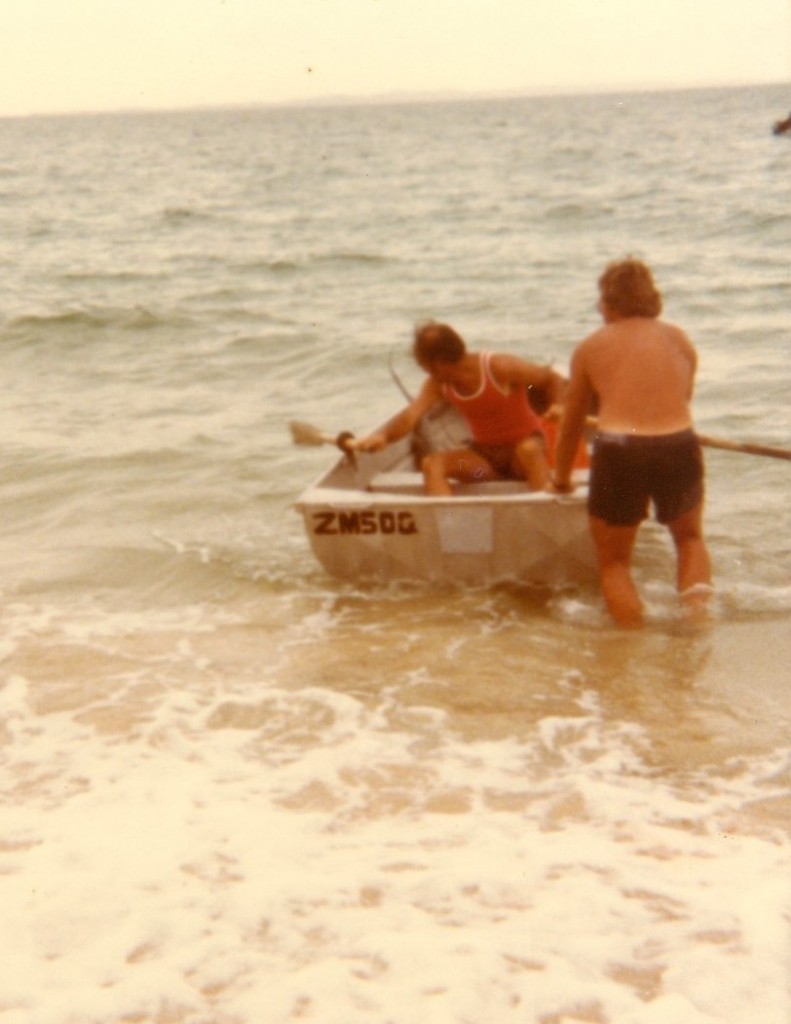
Most of the offshore fishing was done within 10km from DI using landmarks only as a guide to these reefs although when the conditions were good heading wider was an option but landmarks were hard to achieve in these areas and the fishing was limited. Finding reef on the close grounds back then wasn’t as easy as what it is now and this was due to the fact that paper graph echo sounders were used and they would go through lots of paper if you sounded around for long periods of time. I remember as a very young kid often un rolling these paper graph readings from previous trips and taking some interest in what it showed. Wolf rock was always an attraction and not only a pelagic haven but also at times fished very well for reefies with Dad often anchoring very close to wolf rock and pulling some big Jewies. I also have a good memory when I was kid fishing Wolf Rock on dark and pulling a heap of Big Snapper, which was just amazing. Dad also recalls a trip when they were fishing in an area called Gomborian, which was about 10km out where they had a mad fishing session on Snapper. They caught over 20 big Snapper and remembered how they lost a heap more when bigger Snapper were crushing the hooks up. There was also a Killer Whale hanging around the boat for a long period and also some blokes in another boat anchored very close by who were catching heaps of good sized Small Mouth Nannygai and nothing else.
One of the best memorys I have from Fishing DI when I was a kid would be a session on Spanish Mackerel around the headland. It was just mayhem with Dad and myself pulling 32 Good sized Spanish before returning them to the beach for cleaning. We then returned to a piece of Reef we called the Pearlie Patch only a couple of km’s out where we pulled 51 reef fish which were sold to the fish markets back when licenses weren’t required and bag limits weren’t an issue.
You would think 30 years ago the fishing would be unreal around the DI close grounds but the general quality of fish wasn’t all that fantastic although the quantity sure made up for it. There were the odd good fish taken here and there but most of the better fish came from areas where landmarks were difficult to use and it was one of these areas that saw some great fish pulled aboard including a 30lb Red and a 12lb pearlie.
An interesting aspect back then was how much a Red Emperor was a rarity to catch. I’m not talking big ones either but even the small ones were pretty elusive with a couple over 30cm a real bonus. These days they are everywhere, which indicates bag and size limits are really working well to sustain these great fish. Some things just haven’t changed at DI and the Sharks were always a menace eating most of the larger fish hooked. A couple of regular fishermen one day got sick of the sharks eating their fish and rigged up a 60ltr drum with ¼ inch cable running off it. It didn’t take long for the bait to be taken and after a while the Shark chewed through the ¼ inch steel cable showing the power of these big brutes.
Due the improvements of technology over the years it is easy to say that fishing at DI has become a lot better in the last 10-15 years with some great quality fish being taken since the help of GPS’s and powerful sounders allowing us to explore massive areas off DI taking full advantage of what’s on offer. Out of all the old spots from the early days there’s only one mark which we call the Pearlie patch that still fishes well and considering it’s only a couple of km from the headland it’s a great option in rough weather. To think back about how much effort and gear was required for the long stays at DI just amazes me. It is a true testament how much we all loved the place and what our parents would do for us.
Greg Lamprecht

